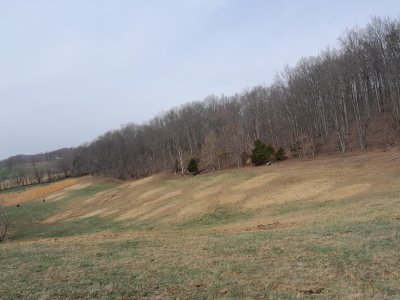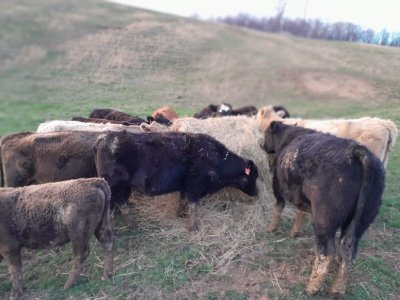I feed whole bales on broomsage areas and the poorest of ground. I've tried unrolling on the poor ground. The improvement isn't nearly as drastic.If one of your primary goals is to improve the pasture's fertility and grass growing ability, then unrolling is in most cases the best, most economical way to feed to achieve that goal across a lot more area.......... seems obvious right? Spread everything out across more ground, improve more ground faster. If you're buying in hay, you're bringing fertility from somebody else's acres and fertilization program and applying it to your acres.
If I was "buying and applying fertilizer" (meaning inorganic fertilizer) to make my pasture grow more feed, would I haul it out there and put it on a pile, or on "multiple piles", or would I try to spread it somewhat evenly across the whole pasture? Would I perhaps, in order to build up a specific area that's more deficient and in need of more work, potentially spread "more" fertilizer over that area... like is done with "variable rate spreading"? Absolutely... THOSE are the value-added benefits gained by bale unrolling, vs. bale grazing. But nothing is "free" in this world... that benefit comes with a cost in labor, fuel, and equipment.
If your goal of lowest cost to FEED the hay (labor/fuel/equipment/etc,.) is your primary goal (NOT the lowest cost for the fed hay itself, because of potential for waste), then bale grazing is your best bet. It can't compete with grazing stockpiled feed though, if you can accomplish that.
I think it's great either way.



